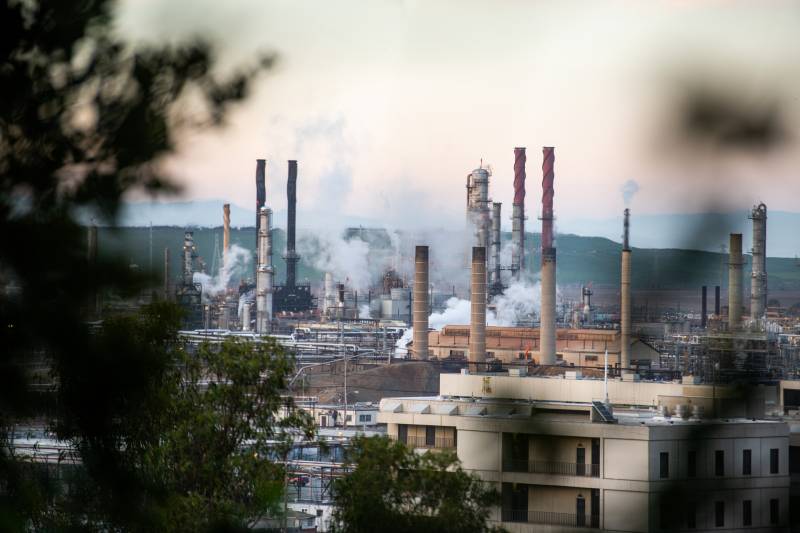Chevron says it made "robust efforts" to prepare for the storm but the rain that fell on Oct. 24 — a refinery weather station recorded 4.2 inches of rain that day — was too much for a key part of the complex.
"The roof on the building housing critical electrical components for the [cogeneration plant] was not able to handle the severe weather that occurred," Chevron said in its report to the county's hazardous materials program.
Shortly after 8 a.m. that day, water from the leaking roof caused an electrical ground fault, which led to the shutdown of several parts of one of the cogeneration plants. Those plants are designed to consume gases produced during refinery operations and generate steam and electricity for the facility.
The loss of power and steam from the cogeneration plants triggered more problems.
Eric Smith, associate director of Tulane University's Energy Institute, said the sudden loss of electricity and steam "has drastic negative effects on the downstream process units."
Several parts of the refinery shut down. Then a backup power system for the cogeneration plants failed, too.
The refinery then routed gases to six refinery flares on and off for more than 48 hours. The flames and smoke bursting from the facility could be seen for miles.
Flaring is a measure refineries use to stabilize operations when they suffer malfunctions. Flaring can help prevent catastrophic failures in refinery units, but major incidents like the one in October release large volumes of toxic material into the air.
Oil companies and refinery experts have emphasized that flaring is a necessary safety feature.
"Without the ability to flare hot, high-pressure gases, the whole site would have become a smoldering ruin" during the October incident, Tulane's Smith said.
Chevron reported months after the incident that the Richmond refinery's flares released at least 23,800 pounds of sulfur dioxide during the three-day incident.
Air district officials said they were investigating to determine whether Chevron's flaring created a strong fuel-like odor that prompted the West Contra Costa Unified School District to close three schools the day after the storm.
Refinery officials have said their testing did not suggest the releases led to violations of air quality standards. County officials have said they did not detect any problems either.
The company told county hazardous materials regulators that it repaired the roof on the cogeneration plant that leaked and over the next year it will look into potential design changes for the roof so it can withstand future storms and see whether it needs to adjust its roof inspections, among other improvements.
A Chevron representative said the refinery conducts regular building inspections and that it has safety controls in place — and emphasized the October storm was an extreme event.
"The October 24 event was a rare convergence of two storms and the first significant winter storm, which resulted in historic, rapid rainfall. Chevron Richmond has robust operating plans in place to safely run the facility during power disruptions," Linsi Crain, a refinery spokesperson, said in an emailed statement.
"These operating plans prioritize critical equipment in an effort to minimize any potential impact, and if necessary, direct process streams to safety flares," Crain said.
"Maintaining a reliable facility is a top focus item and we have dedicated teams that work to ensure the reliability of our operations under various circumstances."
Air district flaring data
Chevron's October releases renewed focus on the Chevron facility's flaring. Weeks after the storm, the Richmond City Council sent Chevron a video of a meeting in which residents complained that the company was not providing enough information about the plant's problems.
Recently published data from the Bay Area Air Quality Management District shows the Chevron refinery experienced 93 flaring events from 2016 through late 2021, compared to 122 for the other four local refineries combined. Last year, Chevron Richmond recorded 25 flaring incidents, one every two weeks on average. The other four refineries had a combined total of five.
October's storm came nearly a year after another power problem at Chevron triggered a series of flaring incidents. The refinery blamed an incorrectly labeled electrical diagram for causing an outage in November 2020 that led to the release of 100,000 pounds of toxic gases.

